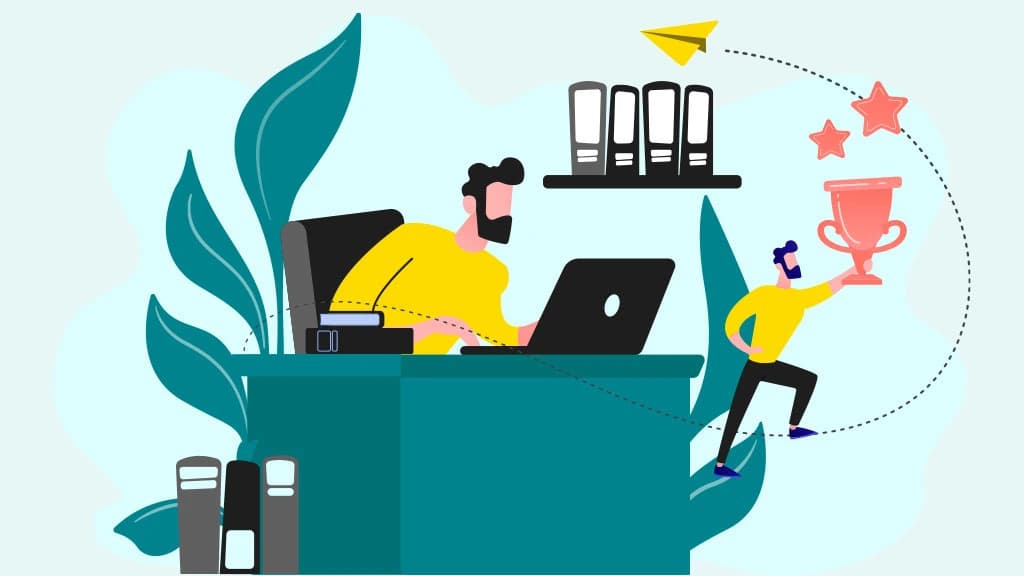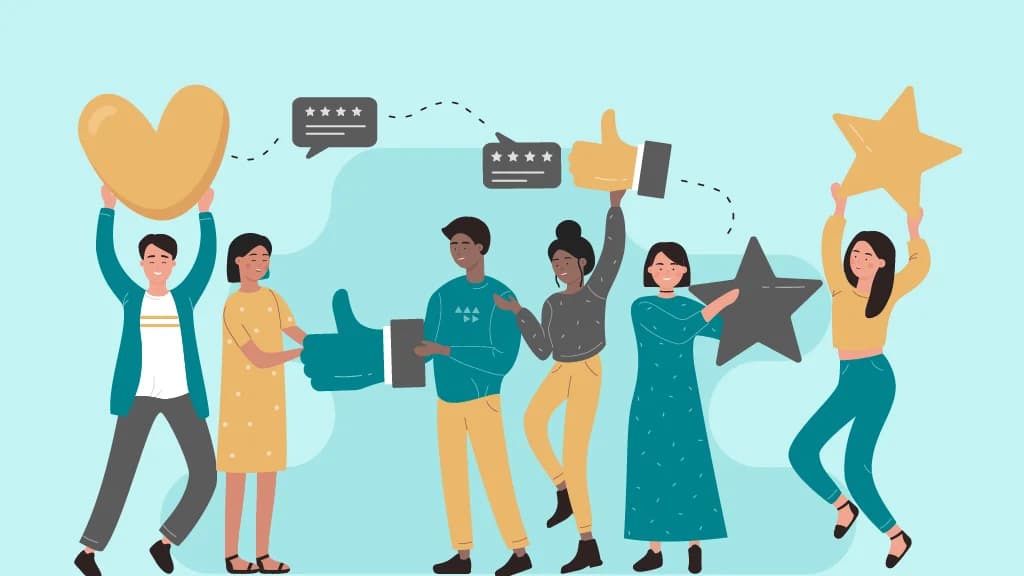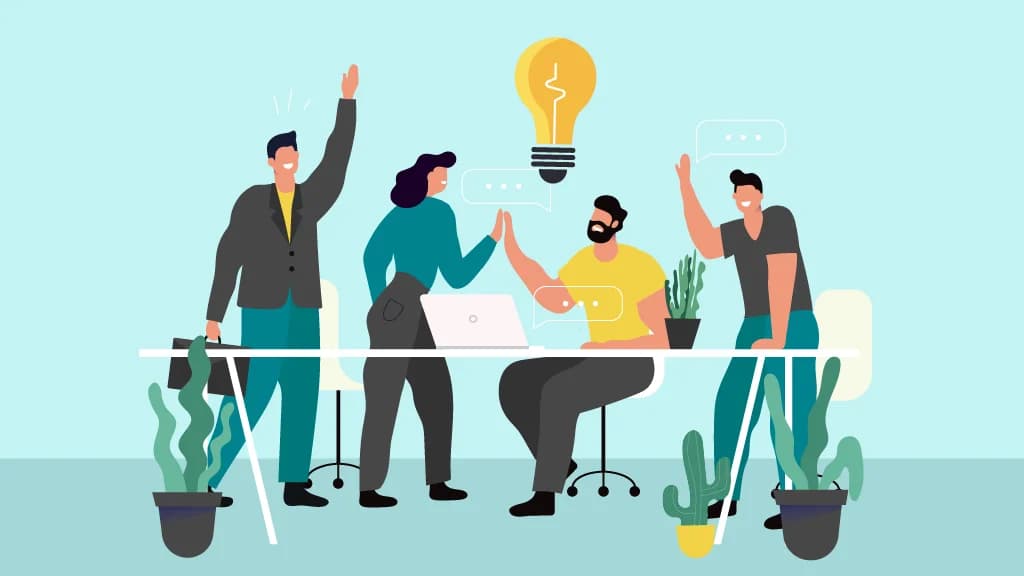
Team AdvantageClub.ai
September 30, 2025

When employees are encouraged at their workplace, they think creatively, work smartly, and stay committed to an organization. All this results in increased productivity and high retention rates. Traditional work strategies to motivate employees often fall short, while AI-powered engagement tools like AdvantageClub.ai are transforming the landscape.
By utilizing artificial intelligence platforms, organizations can deliver personalized reward and recognition programs through data analysis. When companies match staff rewards with personal motivating factors, employees work with more dedication.
Motivations & Maslow's Hierarchy
Abraham Maslow’s Hierarchy of Needs offers insights about an employee’s actions at work which are shaped by five different levels of motivation. All employees in the foundation prioritize two core needs: financial security and workplace safety, which satisfy their basic physiological and safety needs. Once the fundamental requirements of an individual are met, social needs become a priority, leading them to seek group relationships, membership, and social ties. At the higher level of the hierarchy, esteem needs to focus on recognition and achievement. Employees want to be acknowledged for their achievements and may also seek opportunities to have power within their work roles.
Human beings attempt to unlock their maximum potential by pursuing personal development, independence, and mastery at the Self-Actualization level. When organizations understand what truly motivates their employees, they can create a workplace where people feel secure, valued, and empowered to grow—both personally and professionally.
Companies that combine their workplace strategies with important motivational factors tend to achieve productive workforces. Here, employees tend to demonstrate innovation and create a long-term commitment, resulting in high performance.
| Maslow’s Hierarchy of Needs | Related Workplace Motivations |
| Physiological Needs | Extrinsic |
| Safety Needs | Extrinsic |
| Social Needs | Affiliation, Social |
| Esteem Needs | Achievement, Power, Extrinsic, Intrinsic |
| Self-Actualization Needs | Intrinsic, Achievement, Power |
Organizations develop more potent workplace strategies by identifying the six types of motivational categories as derived from Maslow’s hierarchy. The alignment between employer strategies and employees’ key drivers becomes possible by ensuring monetary stability, promoting social connections, and providing recognition for accomplishments and independence for development. This methodology simultaneously improves team engagement, enhancing work performance and employee job contentment.
6 Key Motivators at Work
1. Intrinsic Motivation: Purpose and Passion
Intrinsic motivation arises from the employees’ internal desire to achieve professional success and establish purpose in their work roles. According to research by Harvard Business Review, employees give prime importance to the purpose, relevance, and value they create in a job. Individuals who feel their work has meaning to the organization automatically achieve higher job satisfaction.
AdvantageClub.ai enables managers to use its AI platform to better understand their teams’ behavior patterns, offering insights into their individual preferences and motivational factors. Acknowledging and rewarding individuals based on their personal preferences makes them feel valued at work, which ultimately boosts their overall productivity.
Key Benefits for Employee Engagement:
- Boosts creativity and innovative thinking: When employees are passionate about their tasks, creativity and innovative solutions are just a by-product of their job.
- Improves job satisfaction and increases retention rate: Both workplace happiness and employee retention grow as staff find more meaning by applying their work to worthwhile goals.
- Reduces burnout and stress levels: Incorporating employee morale boosters helps create a positive work environment, making tasks more enjoyable and reducing stress.
- Encourages continuous self-improvement: When employees work on projects they love, they are encouraged to learn and refine their skills.
Engagement Offerings:
- Personalized project assignments: Assign projects as per the strengths and passion of an employee.
- Tailored rewards for creative input: Offer personalized rewards that comply with employees’ personal preferences.
- Real-time feedback and recognition: Integrating AI-driven performance analytics helps monitor progress and provide meaningful feedback
- AI-driven performance analytics: AI performance analytics monitors employee progress through data analysis to guide better outcomes.
2. Extrinsic Motivation: Tangible Rewards
Employees receive extrinsic motivation through external elements such as bonuses, promotions, and public acknowledgment. Rewards systems designed with employee value in mind help maintain high engagement levels and more outstanding workplace commitment. According to a survey by SHRM, employees in companies with strategic recognition programs feel 21.5% more empowered to achieve organizational goals and experience a 23.4% lower turnover rate compared to those in organizations without such programs.
Advantage Incentives Automation helps managers deliver incentives based on data, which produces positive results with employees regarding motivation, productivity, and organizational loyalty.
Value Addition to Employee Engagement:
- Drives higher performance and productivity: Incentives establish goals for staff members to reach and exceed targets.
- Reduces turnover and absenteeism: Employees feel valued and stay committed to the organization.
- Encourages healthy competition and goal achievement: AI-driven employee recognition and rewards system inspire employees to strive for excellence.
- Strengthens the employer-employee relationship: Recognition fosters a positive and supportive work environment.
Engagement Offerings:
- Performance-based bonuses: The system gives financial rewards to staff who meet essential performance goals.
- Customizable gift cards and vouchers: Employees receive customized reward options that match their individual tastes.
- Recognition badges and awards: The organization understands how proper acknowledgment and meaningful display of achievements drive employee motivation.
- AI-driven incentive tracking: AI-Driven tools to monitor employee progress and tailor rewards accordingly.
3. Social Motivation: Building Collaborative Networks
When employees make meaningful connections at work, they flourish better. An office environment that supports teamwork can substantially increase staff dedication. According to a Harvard Business Review, when employees feel a strong sense of belonging, they perform 56% better, are 50% less likely to leave, and take 75% fewer sick days. People who discover belonging within their workplace environment maintain an extended commitment to team responsibilities.
With an AI-driven Social Recognition features, employees can share their opinions about each other’s contributions. This strengthens team bonds and promotes a collaborative work culture.
Positive Impact on Employee Engagement:
- Strengthens team collaboration and trust: Encourages teamwork and open communication.
- Reduces feelings of isolation and disengagement: Assists remote and hybrid employees to stay connected with their colleagues.
- Encourages knowledge sharing and idea exchange: Fosters innovation and creative problem-solving.
- Builds a supportive and inclusive work environment: Boost workplace culture and morale.
Engagement Offerings:
- Peer-to-peer recognition programs: All employees should use peer-to-peer recognition programs to acknowledge the valuable achievements of their colleagues.
- Virtual team-building events: Foster fellowship and collaboration.
- Social wall for appreciation posts: The appreciation posts section on the social wall lets the company publicly showcase milestone achievements and team accomplishments.
- Community-driven engagement forums: The organization should create engagement forums for community members to spark ideas and conversations.
4. Achievement Motivation: Goal-Oriented Recognition
Employees are encouraged to reach their goals, especially when there’s recognition and praise for their hard work and success along the way. They feel the satisfaction of knowing that their efforts are noticed and valued. A study by Forbes states that effective goal-setting aligns individual objectives with organizational success.
An AI-driven performance tracking tool helps managers keep an eye on employee progress while also recognizing their hard work. This not only boosts morale but also encourages a culture of ongoing improvement and higher productivity.
Advantages for Employee Engagement:
- Increases focus and dedication to tasks: Clear goals help employees stay focused and committed to their work.
- Enhances performance and productivity: A well-structured work environment encourages employees to take responsibility for their tasks.
- Promotes Accountability: Recognizing employees for their contributions fosters a sense of responsibility, motivating them to consistently perform at their best.
- Builds a Culture of Recognition: Recognizing accomplishments fosters a motivated workforce and a positive work environment.
Engagement Offerings:
- Goal-setting dashboards: Keep track of your objectives and progress.
- Milestone-based rewards: Employees receive milestone-based prize money when they meet essential milestones.
- Performance analytics and tracking: Data-driven insights into performance.
- Leaderboards and progress updates: Promote healthy competition.
5. Power Motivation: Leadership and Influence
Employees who are always on the lookout to lead and uplift those around them thrive and grow stronger. When given leadership opportunities, they become more engaged and help shape a stronger, more successful organization. According to an article published by Forbes, empowering employees at all levels drives innovation, boosts engagement, and creates a resilient organizational culture.
A well-crafted workforce engagement platform helps recognize and reward emerging leaders. It motivates employees to take initiative and drive innovation through a fun, engaging approach.
Impact on Employee Engagement Dynamics:
- Builds future leaders in the company: Offers opportunities for development.
- Develops innovation and creative problem-solving: Leadership produces innovative solutions and problem-solving approaches through their skills to create new proposals.
- Increases confidence and decision-making capacity: Encourages initiative and autonomy.
- Enhances team leadership dynamics: Encourages collaboration and guidance.
Engagement Offerings:
- Leadership recognition badges: Reward exceptional leaders.
- AI-based performance analytics: Monitor leadership performance
- Access to strategic decision-making forums: Engage employees in strategic decisions.
- Exclusive leadership development programs: Develop future leaders.
6. Affiliation Motivation: Sense of Belonging
Genuine appreciation and strong relationships in the workplace make employees feel belonged. When they know they are valued, they stay committed and motivated to work more efficiently. Deloitte’s 2020 Global Human Capital Trends report references a 2019 study by BetterUp, which states that having a sense of belonging at the workplace can lead to a 56% increase in job performance, a 50% reduction in turnover risk, and a 75% decrease in employee sick days.
Acknowledging achievements inspires employees to perform at their best. AdvantageClub.ai makes it easy for managers to celebrate milestones, bringing teams closer and fostering a supportive work environment.
Contributions to Employee Engagement:
- Improves emotional well-being and job satisfaction: Develops positive work relationships.
- Decreases turnover and increases retention: Develops a supportive work environment.
- Enhances team spirit and cooperation: Develops unity and common objectives.
- Develops a supportive and inclusive work culture: Encourages diversity and acceptance.
Engagement Offerings:
- Work anniversary celebration: Celebrate milestones and contributions.
- Virtual community events and forums: Develop social interaction.
- Personalized appreciation messages: Recognize and show gratitude.
- Team bonding activities: Develop team bonding.
Driving Workplace Motivation
Organizations that use non-financial motivators at work, including the intrinsic and extrinsic drivers, social needs, achievement desires, and affiliation connections, will achieve beyond standard workplace satisfaction toward authentic workplace engagement. The organization should prioritize building an ecosystem that makes employees feel important because this goes beyond traditional perks and works towards achieving company targets.
Engagement platforms from AdvantageClub.ai use Artificial Intelligence to enhance workplace motivation through instant employee recognition. This data-driven innovative system increases workplace productivity, reduces employee turnover, and accomplishes the most crucial goal of making employees feel their work matters to them.
Organizations must comprehend that talent is their most important resource. Nowadays, working professionals must understand and act on their workplace motivation drivers because this practice has shifted from optional to essential. The combination of Advantage Pulse tools that promote personalized recognition and workplace connection development allows organizations to build efficient employee teams demonstrating deep organizational commitment. Meaningful workplace relationships will thrive in the future only through proper recognition of each workplace motivator.





